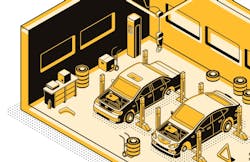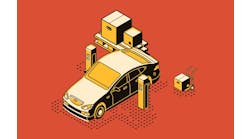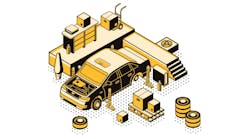Average repair order and closing ratio are very closely aligned, but unlike ARO, a high closing ratio doesn’t always mean high revenue. Most shop owners would agree that a closing ratio of 70 percent and an ARO of 600 dollars is far better than a closing ratio of 90 percent and an ARO of 400 dollars. Even if a shop’s closing ratio is 100 percent, it doesn’t necessarily mean work is being discovered and sold as much as possible.
So how can a high or low closing ratio be a bottleneck in your business? If your car count is sufficient and your technicians are properly inspecting vehicles, but the right services are not being presented to your customer, time and energy is being wasted.
By focusing on closing ratio from the start, customers are more likely to agree to the services needed for their vehicle. This is a vital step in the process and determines the overall sale.
A New Look at Recommendations
The process of achieving a good closing ratio all begins when the technician starts inspecting the vehicle—and in turn, what services they recommend get sold to the customer.
Some technicians may be recommending typical maintenance jobs based on a vehicle’s mileage. The issue with this arises when technicians begin to then recommend common services on the majority of cars that come in, and not because these vehicles actually need it.
Now, when the service advisor sees the same job recommended for every car, he or she begins to not believe what they see, and they don’t try to sell it. This isn’t an issue when the vehicle truly doesn’t need the maintenance, but it does become one when the car did need the service.
In order to fix this bottleneck on the front end, technicians should be empowered to implement condition-based recommendations rather than mileage-based recommendations. This may boost sales and the overall closing ratio of the shop.
A Goal for Every Service
In order to hold staff accountable for a shop’s closing ratio, some owners set specific goals for their service advisors. It is your responsibility as an owner to ensure that your staff is also recommending simple, yet high-margin services to customers and tracking all sales.
Safety issues often account for most of the final estimate. If these can be sold at a closing ratio of around 50 percent, your overall ratio should still be on the higher side.
According to owners across the country, for every five hours of suggested work, service advisors should be able to sell around 2.5 to 3 hours—great service advisors should be even higher.
Within the overall closing ratio goal, set individual goals for different levels of repairs. Start with easily sold jobs like oil changes, air filters, wipers and timing belts:
- Oil changes: 95 percent
- Air filters: 95 percent
- Wipers: 70 percent
- Belts: 55 percent
The next level is services, which include coolant and fluid exchanges. These can be placed somewhere in the 60–70 percent range.
Looking Towards the Future
When all appropriate jobs and services are being presented to a customer, not every client is going to buy into 100 percent of them. But this shouldn’t be disheartening— remember, a super high closing ratio isn’t always a sign of a successful repair shop.
Instead, service advisors should create a plan with the customer to eventually address all of the repairs. The average closing ratio will balance out in the long run and it will help ensure customer retention.



